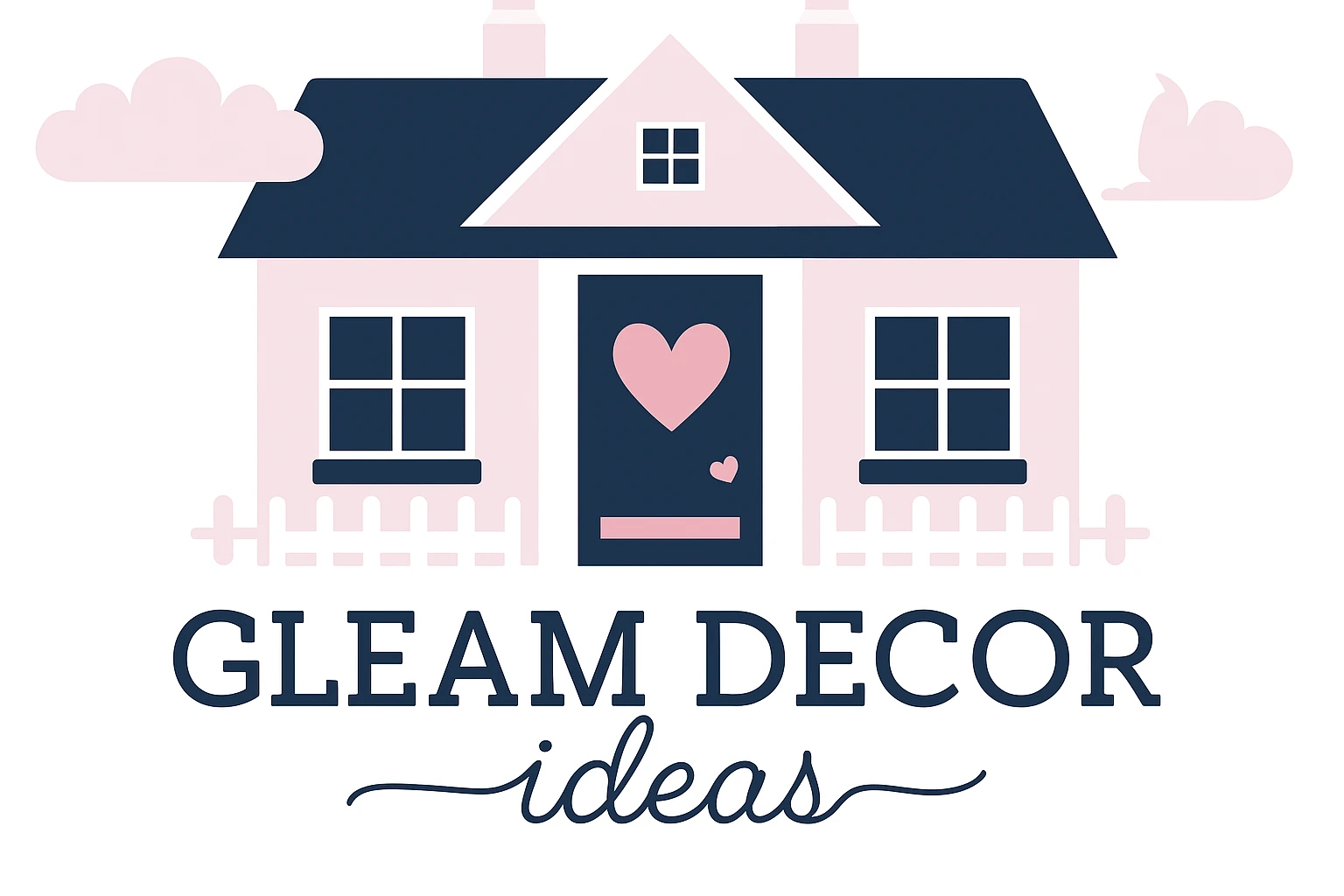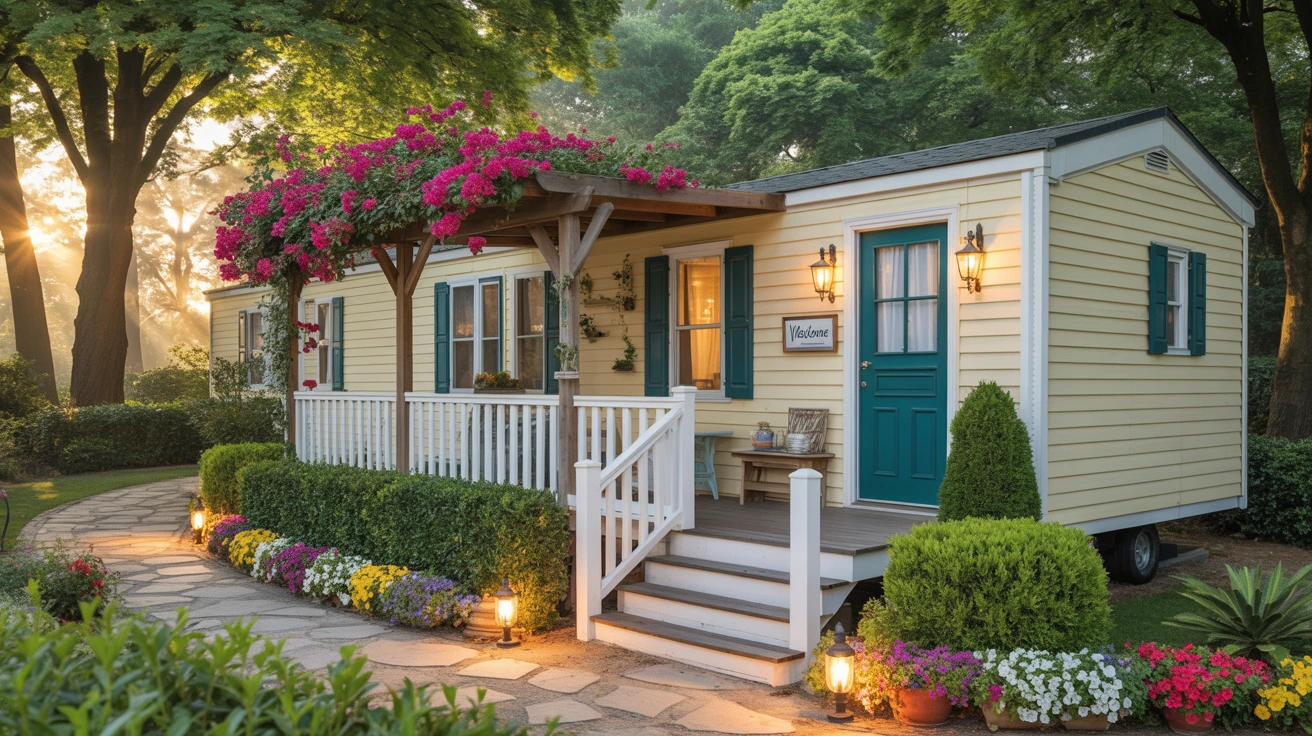Lots of people believe making a mobile home look like a real house is all about adding decorations—flower boxes, shutters, or a fresh coat of paint. While those touches help, they don’t truly change how the home feels. Real transformation comes from design principles that shape how the eye sees your space.
In this guide, we’ll explore clever tricks designers use to give mobile homes a permanent, house-like appearance. From fixing proportions and adding depth to using durable materials and size-specific tips for tiny versus larger mobile homes, these strategies go beyond quick fixes. They reshape perception—turning “just a trailer” into a home that feels intentional, welcoming, and here to stay.
2. Proportional Corrections: Making Your Home Feel Substantial
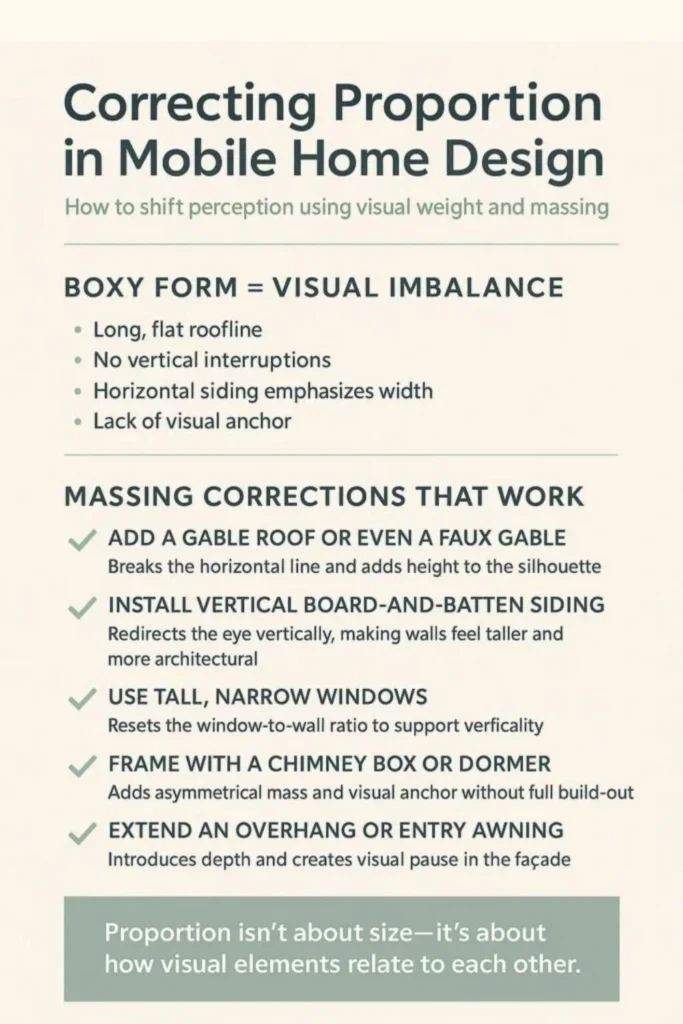
One of the biggest challenges with mobile homes is their long, flat shape, which can make them look temporary or unfinished. The secret to fixing this lies in proportion—how all the parts of your home work together visually. Designers use a technique called massing, which means adding elements that break up flatness and create more depth or height. A gable roof instantly changes the silhouette, while vertical siding draws the eye upward. Even small additions, like a faux chimney, add volume and balance. These tweaks don’t just decorate the home—they reshape its proportions, making it feel solid, grounded, and permanent.
3. Add Height with Faux Gables or Pitched Roof Extensions
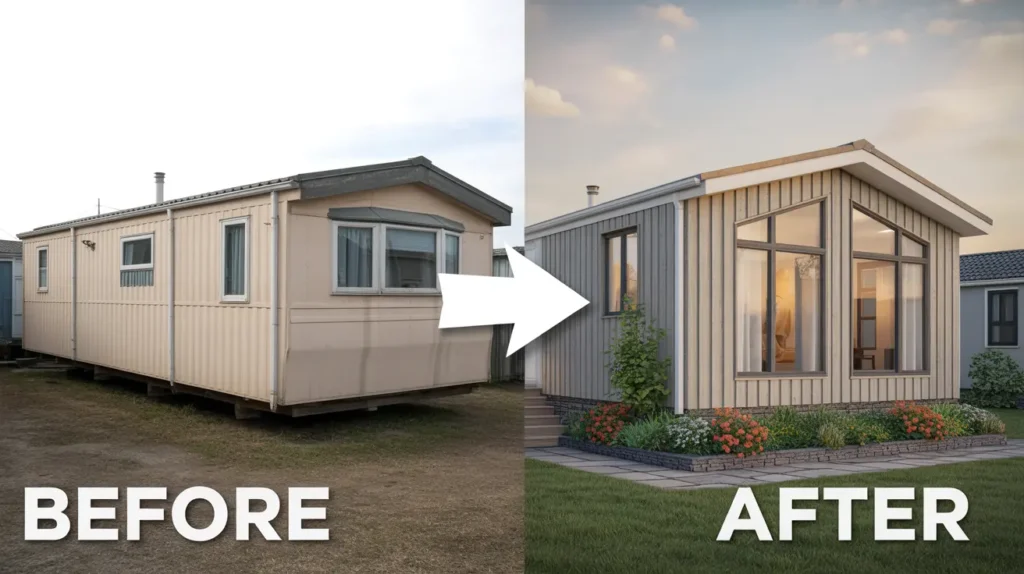
Mobile homes are often built with flat or low-sloped roofs, which can feel boxy and plain. Adding a faux gable or pitched roof extension instantly elevates the design, both literally and visually. A gable adds vertical dimension, making the home appear taller and more balanced. It gives the impression of extra space—almost as if there’s an attic or second story above. The roofline becomes more dynamic, breaking away from the standard rectangle. Paired with crisp eaves and clean lines, these architectural touches give weight and permanence to the structure. It’s a smart way to add sophistication without altering square footage.
4. Swap Wide Windows for Taller, Narrower Profiles
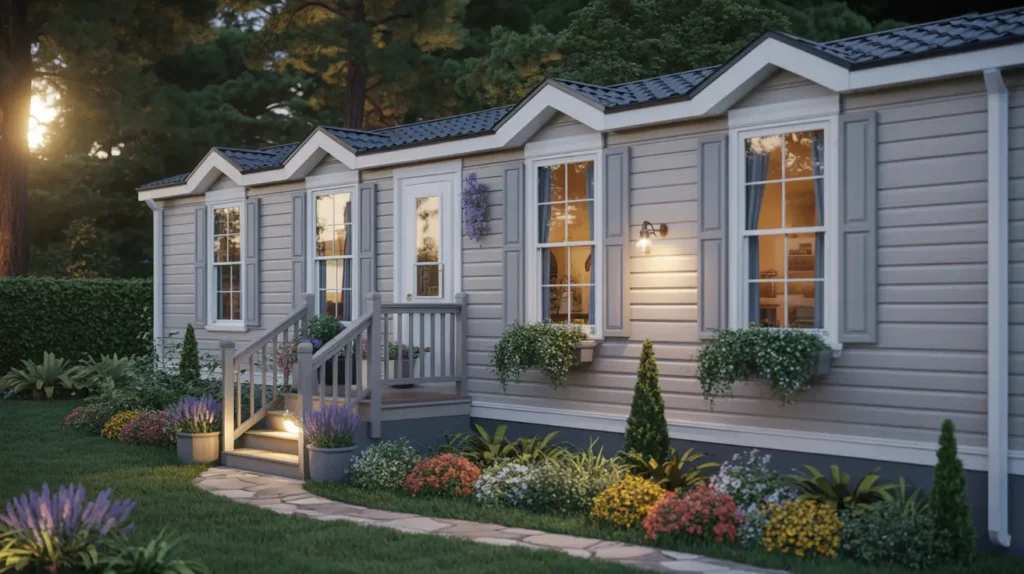
Windows are one of the most powerful design tools for reshaping perception. Wide, short windows tend to emphasize the horizontal lines of a mobile home, reinforcing its temporary look. Replacing them with taller, narrower windows instantly changes that narrative. Vertical windows draw the eye upward, creating an impression of height and elegance. Adding decorative trim or even an arched design enhances this effect, giving the home a sense of refinement. While the interior size stays the same, the exterior feels more intentional and house-like. It’s a small upgrade with a big visual payoff—like a facelift for your home’s facade.
5. Frame the Entry with an Oversized Overhang or Awning
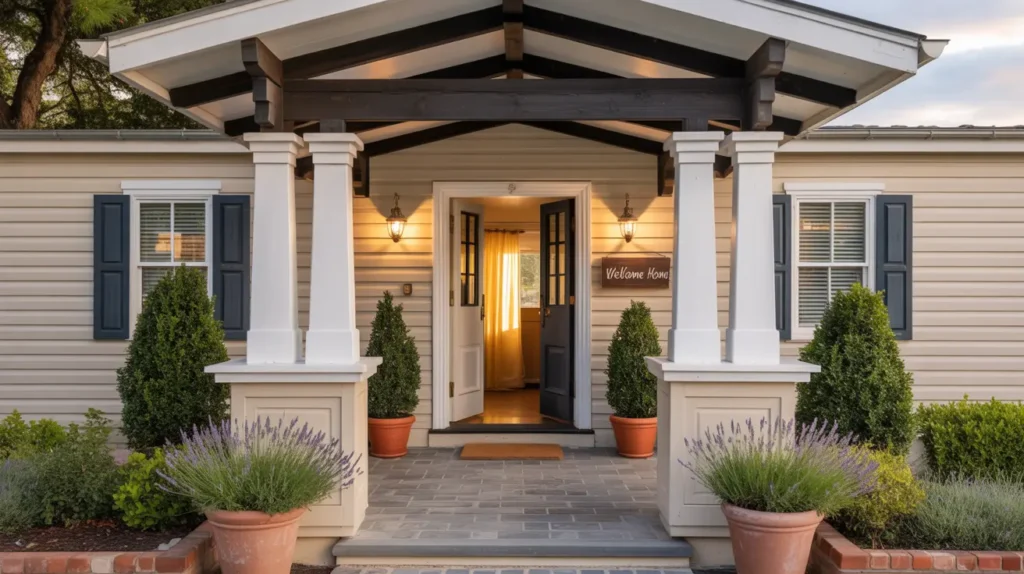
The entrance of your home sets the tone for the entire exterior, yet mobile homes often lack a defined focal point. Adding a large overhang or awning above the entry instantly changes this. Not only does it provide practical shelter, but it also creates a strong visual anchor that tells visitors, “this is the way in.” With thoughtful detailing—like columns, woodwork, or decorative beams—the entry becomes both functional and stylish. This architectural frame adds rhythm, depth, and weight to the front of the home. The result is a space that feels intentional, welcoming, and much more like a permanent house.
6. Establish Visual Hierarchy: Make Your Front Door a Statement
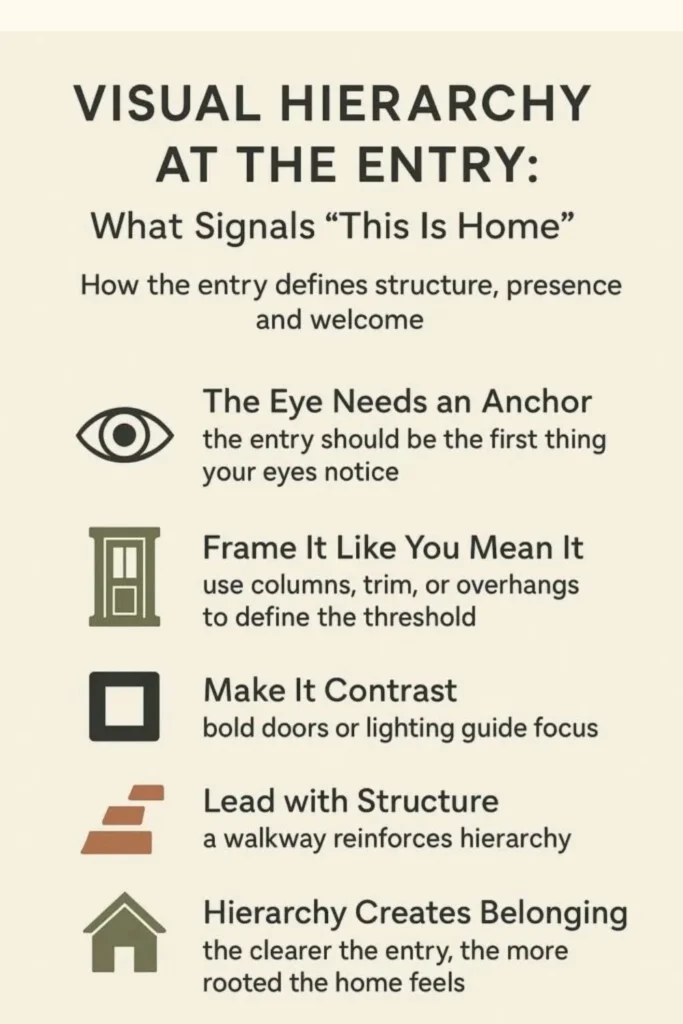
Every home needs a clear focal point, and the front door is the perfect place to establish it. Without a defined entry, a mobile home can look disorganized or unfinished. By giving your front door special attention—through bold paint, accent lighting, or a contrasting trim—you create a visual hierarchy that directs the eye. Pathways, landscaping, or an awning can further reinforce this sense of importance. It’s about telling guests, “this is the heart of the home.” When the entry feels intentional and prominent, the whole exterior reads as more polished, welcoming, and house-like. Design hierarchy makes all the difference.
7. Carve Out a Path to the Entrance
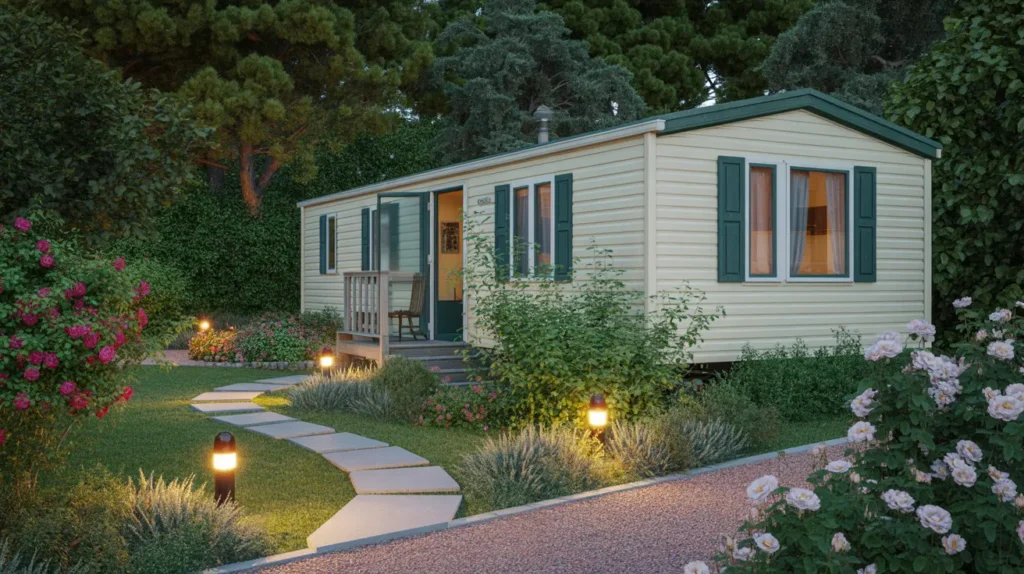
Something as simple as a path can completely change how people perceive your mobile home. A curved walkway of stepping stones, gravel, or brick does more than guide your footsteps—it guides the eye. It naturally draws attention to the front door, giving the home a sense of purpose and direction. Even inexpensive materials can create a powerful effect when arranged thoughtfully. Adding plants along the sides or using lighting can enhance the path’s impact. This small detail makes the home feel more permanent and better connected to its surroundings. A clear, welcoming path transforms “just a box” into “a real home.”
8. Downlighting the Threshold: Create a Lit-Up Sense of Focus
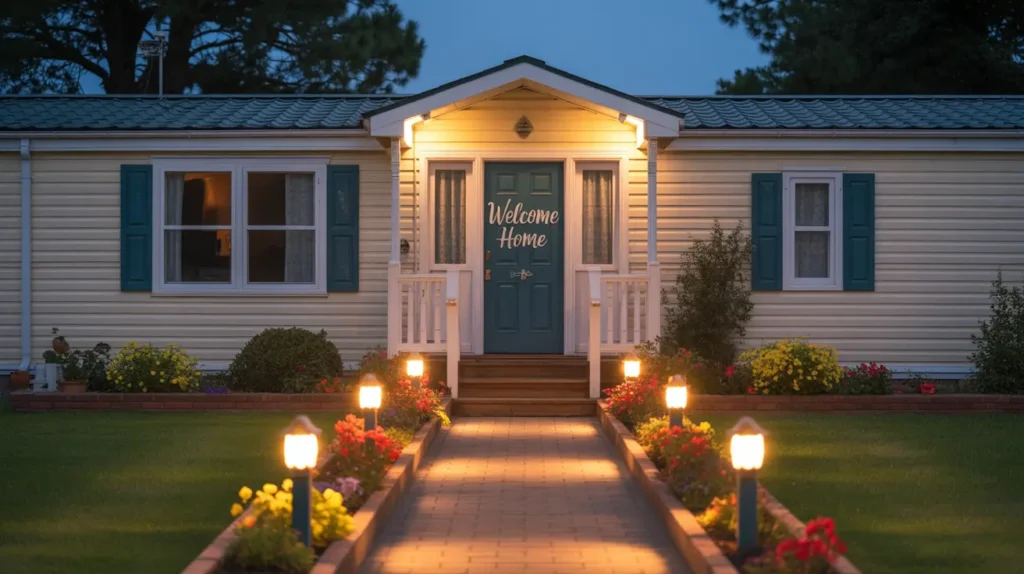
Lighting is one of the most underrated tools for making a mobile home feel like a real house. A simple porch light can work, but downlighting takes things further by casting a warm, focused glow over the entryway. This design trick highlights the front door as the star of the facade, while also adding depth through layers of light and shadow. At night, it creates a welcoming beacon that makes the home feel safe and permanent. Even inexpensive LED fixtures can achieve this effect, instantly upgrading curb appeal. Good lighting doesn’t just brighten a space—it transforms how people experience it.
9. Elevate the Door with a Contrasting, Confident Color
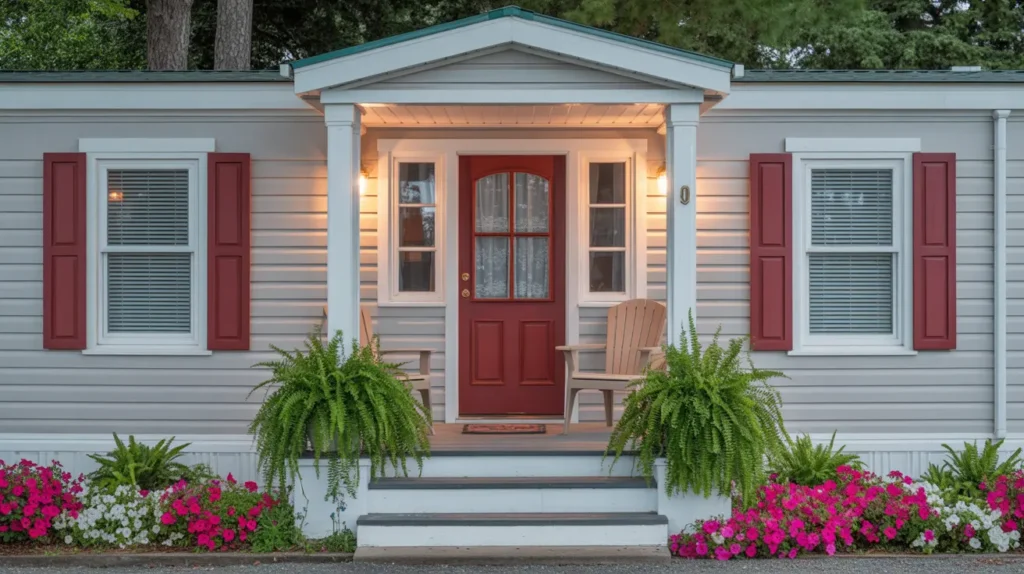
Never underestimate the power of a bold front door. Many mobile homes blend into their surroundings because everything—the siding, trim, and entry—shares the same neutral palette. Painting the door in a contrasting, vibrant color changes that instantly. Think deep red, navy blue, or even a sunny yellow against soft siding tones. This simple move creates a focal point that pops, guiding the eye directly to the entry. It adds personality, balance, and importance without expensive renovations. A door is the handshake of a home, and when it’s painted with confidence, it tells the world your mobile home has style and permanence.
10. Creating Depth Through Layering: Texture, Shadow, and Dimensional Framing
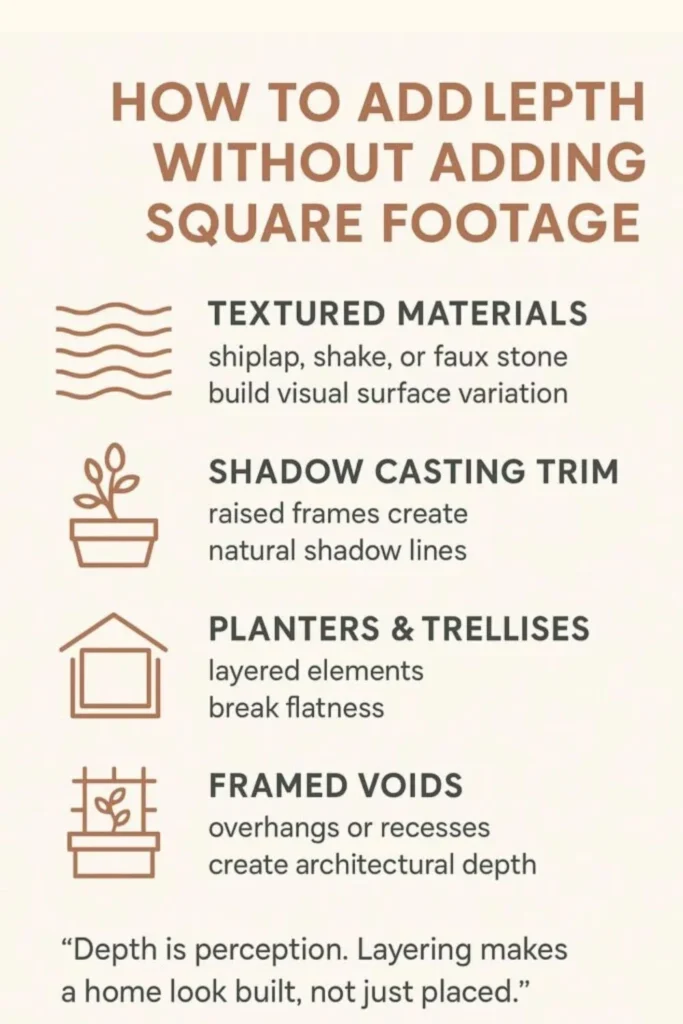
Flat walls make mobile homes look temporary, but layering adds dimension and sophistication. By incorporating elements like trim, trellises, shutters, or even textured siding, you create natural shadows that give depth to the facade. These overlapping surfaces trick the eye into perceiving more complexity and weight, making the structure look more substantial. It’s about playing with rhythm—foreground, midground, and background—so the home feels thoughtfully designed. Even small touches, like raised trim around windows or planters that extend outward, contribute to this layered look. The result is a home that feels dynamic and grounded, rather than flat and boxy.
11. Break the Wall Plane with a Pergola or Decorative Trellis
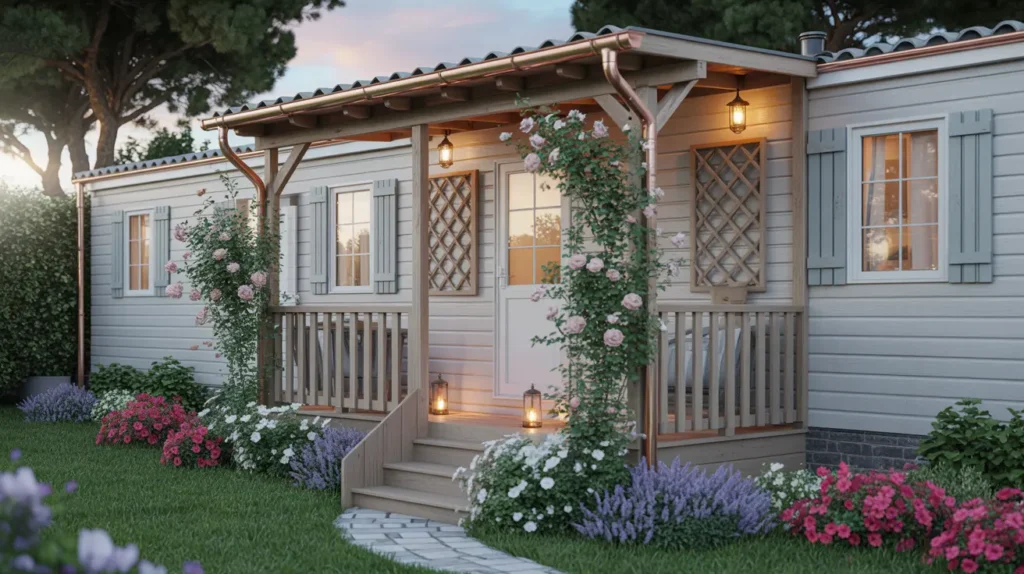
A pergola or trellis instantly adds architectural interest by breaking up the flat plane of a mobile home’s exterior. Instead of staring at a blank wall, the eye now has a three-dimensional feature to engage with. Pergolas create zones of depth—foreground, midground, and background—that add richness to the design. They also provide opportunities for climbing plants or hanging lights, which soften the look and connect the home to nature. A trellis over windows or doors creates similar effects, casting playful shadows and visual texture. These features don’t require major construction but provide a dramatic boost in charm and permanence.
12. Let Planters or Raised Boxes Push Out from the Wall
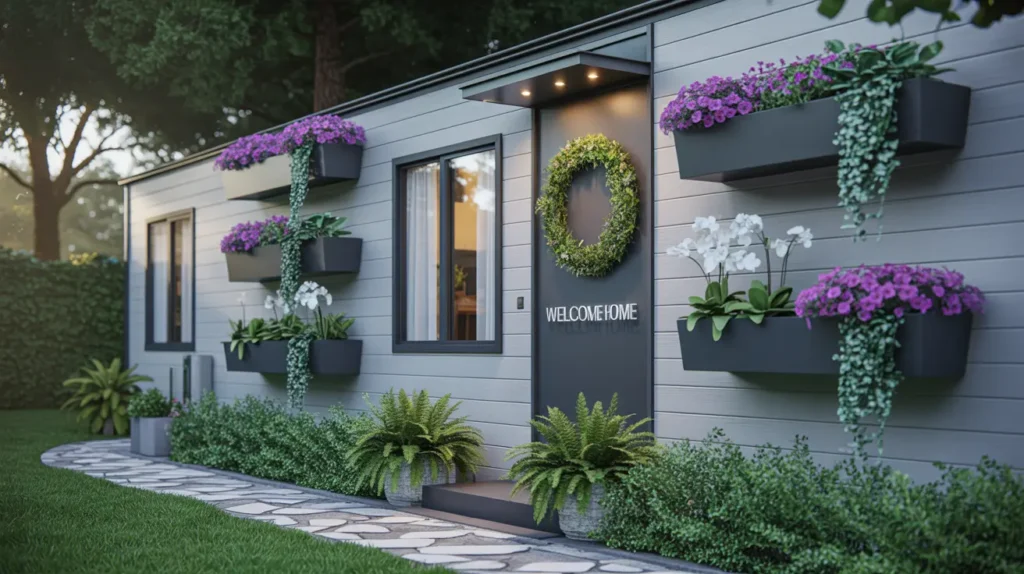
Planters and raised boxes may seem like small details, but they pack a big punch in mobile home design. By pushing outward from the facade, they add depth and rhythm that break up flat surfaces. Filled with flowers or greenery, they soften the home’s edges and anchor it to the landscape, making it feel more established. Layered planters also create a natural transition between the home and the outdoors, blending structure with environment. Best of all, they’re budget-friendly and easy to DIY. What could feel like a temporary structure suddenly looks curated and permanent, thanks to a few thoughtfully placed planters.
13. Materials and Durability
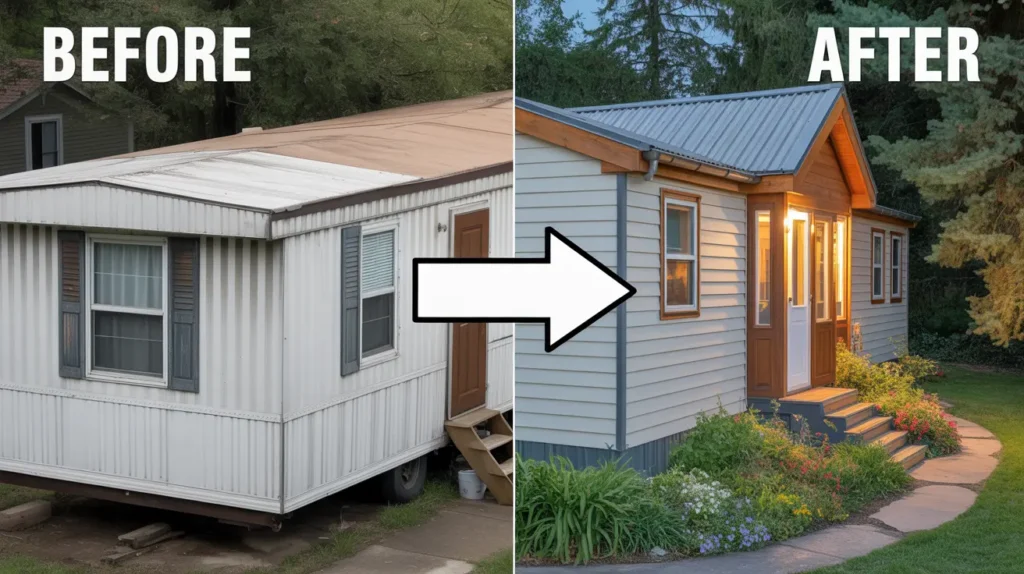
Design isn’t just about looks—it’s about choosing materials that last. Mobile homes can benefit from durable siding options like vinyl, fiber cement, or weather-resistant wood, which not only improve appearance but also stand up to the elements. Upgrading trim with composite or PVC materials ensures it won’t warp or rot over time. Even roofing materials, like metal or asphalt shingles, can make a big difference in both durability and curb appeal. By investing in stronger materials, you avoid quick fixes and create a look that holds up for years. Lasting quality is what truly separates a “house” from a “temporary unit.”
14. Tiny Home vs. Larger Mobile Home Variations
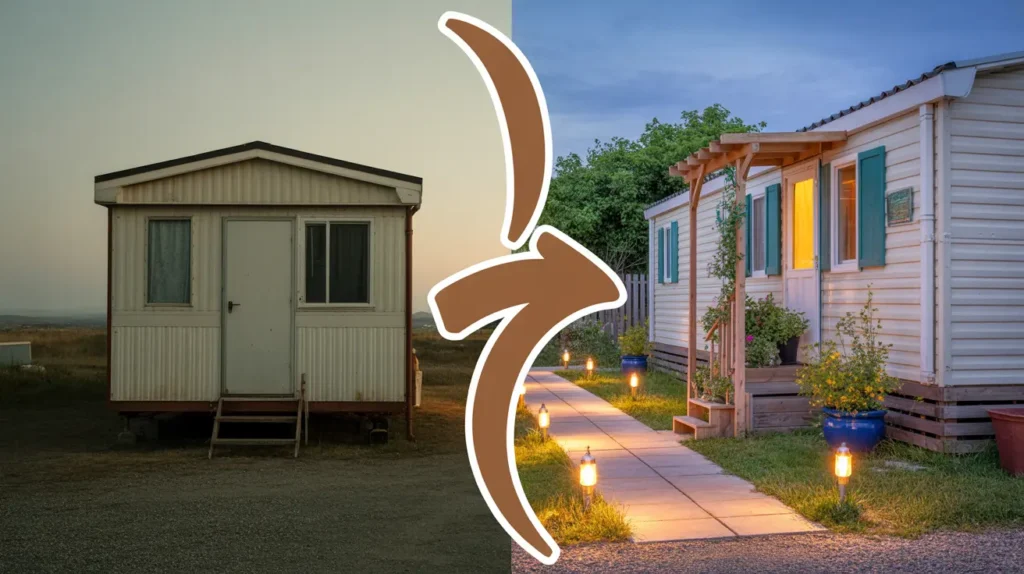
Not all mobile homes are the same, and design principles should adapt to size. For tiny mobile homes or RVs, focus on vertical tricks—like tall windows, vertical siding, and slim planters—to give the illusion of more height. Compact pergolas or small awnings work well without overwhelming the scale. On the other hand, larger mobile homes benefit from massing techniques, extended rooflines, and layered landscaping that add balance and character. By tailoring strategies to your home’s size, you get the best results. Whether small or spacious, the goal is the same: transform flat, boxy shapes into warm, welcoming, house-like homes.
For even more creative mobile home ideas, don’t miss our guide on smart landscaping tips that make your outdoors shine.
15. Design Isn’t Decoration—It’s Perception Engineering

When you’re upgrading a mobile home, it’s easy to think it’s just about adding pretty touches—paint here, planters there, maybe a new light. But the truth is deeper: design is perception engineering. Every small change shifts how people see your home and how you feel living in it. The right color can make it look sturdier. The right trim can make it appear bigger. Lighting can transform it from flat to dimensional. None of these tricks are purely decorative—they’re tools that reshape how your home is experienced. That’s the secret: you’re not just decorating, you’re redefining its identity.
Conclusion
At the end of the day, giving your mobile home the look of a real house isn’t about massive renovations or breaking the bank. It’s about understanding design principles and applying them smartly—contrast, layering, depth, proportion, and durability. By working with light, color, and texture, you can transform a flat facade into a home that feels permanent, grounded, and welcoming. Small upgrades like bold doors, downlighting, pergolas, or planters can change the entire perception of your space. With the right choices, your mobile home won’t just look like a house—it will feel like one, too.
